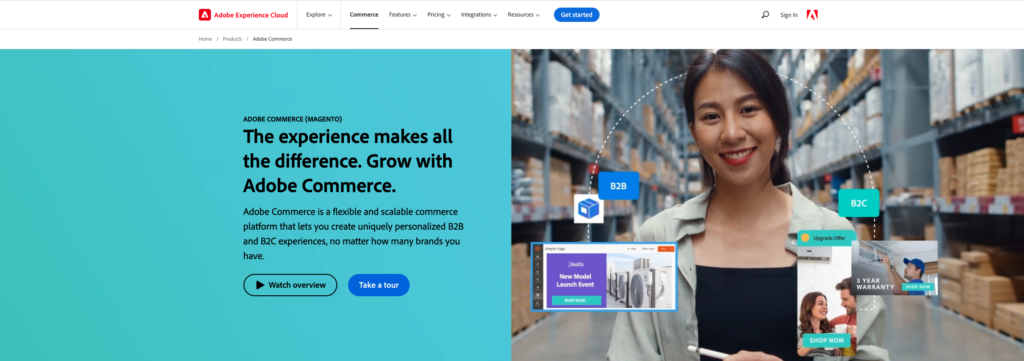
No matter what industry you’re working in, you don’t want to get on the IRS’ bad side. Whether it’s misclassifying an employee by mistake, or not keeping up-to-date records, there are lots of little ways you can make mistakes with payroll.
Not to mention, with inflation on the rise, over half of all Americans are living paycheck to paycheck. That means all it takes is one small error and you’d have (deservedly!) unhappy staff on your hands. Luckily, many common payroll errors are entirely preventable – especially if you implement strong payroll system management.
What is payroll system management?
Payroll system management encompasses the payroll process that ensures employees receive their salaries from their employers. It also involves ensuring that both the business and the employees meet any required fiscal responsibilities to state or federal authorities. These can range from Social Security and Medicare taxes to FUTA (Federal Unemployment Tax Act) payments.
There are a number of reasons why efficient payroll management is important. Not only does it keep the organization’s financial records up to date, but it also ensures that a business is complying with relevant regulations. It helps a business pay their employees on time and with the right amount, as well as covering the various tax requirements and maintaining their records. Without that efficiency, organizations can face salary claims and government penalties.
Managing these payroll challenges is essential to ensure smooth operations and compliance.
Common payroll mistakes to avoid
Mistakes happen, but payroll-related mistakes can be costly to both the business and the employee. Here are some of the most common errors – and how to avoid them.
- Employee classification
One easy-to-make mistake is misclassifying the employees you have. It’s important to understand the difference between an employee and an independent contractor as the tax requirements differ between them. Generally speaking, an independent contractor would submit their own invoices, pay their own tax, and aren’t under anyone’s immediate management. However, the definition can vary from state to state.
If your payroll department is unsure how to classify a worker, they can ask the IRS to help determine status (form SS-8). Alternatively, if you have already made errors in this area, you can seek help, again from the IRS, through their Voluntary Classification Settlement Program.
- Wrong data
Data and information mistakes are the most common type of payroll errors. One thing to note is that there are certain employee documents you are required by law to keep for four years or more:
- Tax forms
- Timesheets
- Proof of payments
- Any canceled checks
To ensure efficient payroll system management, you need the correct information. Your initial data collection happens when an employee fills out a W-2. You need to be sure the following information is accurate:
- Full name. Check spelling and include any middle names. Also, update this if there is any change of name.
- Social security number. Every American has a unique social security number which helps identify them.
- Address. This needs to be their current home address and should be updated in your records if they move.
- Date of birth.
- Employment dates. Your records should show when the person started working for you and, if applicable, the date on which employment ended.
- Employment details. This section should cover factors such as hourly rates, overtime rates, and any bonus details.
Additionally, make sure you have up-to-date bank details and payment methods, as missing this information can delay payments to your employees.
- Missed deadlines
It’s crucial that your business complies with any set deadlines. There are two deadlines you need to consider. The first is the monthly (or biweekly) deadline set for you to deposit your share of taxes and any withholding taxes. You may face penalties of up to 15% if you miss these deadlines. There are also quarterly and annual returns that your business should file with your W-2s.
- Withholding issues
Taxes can be complicated, there’s no denying that. With so many different rules and regulations to consider, it’s no surprise that there are regular issues with the withholding process. Some of the common mistakes you should be aware of include:
- Erroneous calculations of deductions (both pre and post-tax).
- Missing out taxable benefits such as bonuses or gift cards.
- Failing to withhold taxes at the state or federal level.
- Taking the wrong deductions from exempt employees.
- Issuing the wrong W-2 forms.
- Exempt vs. non-exempt
This can be an area that causes real confusion. Your non-exempt employees, who are usually hourly ones, are entitled to overtime payments while your non-exempt ones are not. If a non-exempt employee works more than 40 hours in any given week, then you need to pay them time and a half. Trying to avoid any related obligations violates the FLSA (Fair Labor Standards Act) and you could face a lawsuit.
There are three main conditions to meet to be classified as exempt:
- Have earnings that equal or exceed $684 per week or $35,568 annually (as of August 2023).
- Be in a managerial or administrative role or have a professional degree (for example, an engineer).
- Be receiving a salary (or a consistent hourly schedule) where their final salary is relatively unchanged).
How your payroll management system should work
It is likely that every process within your organization has guidelines in place, and payroll management should be no different. By following these guidelines, you reduce the risk of errors and regulatory non-compliance.
- Collect relevant data
Gone are the days of payroll being a purely manual process. There are now even systems that can help employers manage the payroll process for one employee! So, whatever system or software you are using, the first step is to collect and enter all the data you need to both pay any taxes and provide accurate paychecks.
Your system should be able to calculate and pay all taxes due before it processes payroll for a particular time period. The data you enter into your system should include employee grades, state and federal deductions, any applicable allowances, and details of any loans or advances made.
Additionally, consider leveraging modern technology to enhance your payroll management. Incorporating AI for accounting can streamline data entry, reduce errors, and improve overall efficiency in managing your financial and payroll records.
- Compile all necessary documents
Documenting each employee should start during the onboarding process – using an online form builder that links to your payment management system can ensure your payroll department has all the necessary information. This can include:
- A list of Federal withholdings that apply to your employees.
- Eligibility forms that contain all the professional and personal information about each employee.
- Forms for state income tax and any other relevant withholding details.
- Ensure you have all the required company information
You need to make sure that all the details of your company are contained in the system. If you operate in more than one state, you also need to include every state tax ID number that applies to the locations you operate in. You also need to set the frequency of when salaries are paid, and by which method (cheque, direct deposit, etc).
- Integrated time tracking
To pay the correct salaries, you need to know the hours worked by employees. Investing in time-tracking software that can be integrated can make this much easier. While it can be tempting to stick with manual time tracking, especially if you’re running payroll for small business, it can be very prone to human error.
- Set up compliance norms
You may operate separate company and payroll bank accounts. By linking these, and setting up compliance norms, your payroll system can reconcile all of your payroll details and can help ensure that salary payments are free of errors. It can also help you avoid potential penalties that would be applied if you failed to meet certain regulatory requirements.
- Gross salary
With accurate data and a properly set up payroll management system, the first thing it will normally calculate is gross pay. It should take note of total hours worked including overtime, as well as any bonuses that may be due for that time period. This should mean that you now have a gross figure for each employee and your system can move to the next step.
- Net salary
Once you have a gross figure, you can apply any deductions such as pre-tax and tax withholdings. Efficient payment system management means that these figures are deducted from the employee’s gross salary and will provide a net figure which is what employees receive.
- Employer responsibilities
Your system should recognize the various employer responsibilities such as paying withheld tax, as well as employer contributions for things like Medicare and Social Security.

- Reconcile and verify
Regularly check that your payroll software is working properly and that any updates have been installed. Reconcile all your figures and verify their accuracy. It can be helpful if your payroll system is integrated with any accounting software you use.
- Generate reports and documents
The penultimate stage in the process is to generate reports and documents and send them to any relevant departments and managers such as your finance department. If you feel overburdened by documentation, you can utilize a document-understanding solution. You should also let employees know any necessary details and if there are any expected delays.
- Paycheck details
Depending on the state you operate in, you should be issuing a statement to employees when they receive their salary. These statements should show all pertinent details such as hours worked, gross and net figures, and all deductions made.
The Takeaway
It’s important to remember that efficient payroll system management is not just about complying with the various tax laws, it’s also about ensuring your employees are not inconvenienced.
With so many software solutions available, the likelihood of human error is vastly reduced. However, the employer still has a responsibility to ensure that tax deadlines are met and that accurate data is put into the system they use so that salaries are paid on time and that the figures are correct.
Featured image by Money Knack, www.moneyknack.com on Unsplash
The post A Simple Guide to Efficient Payroll System Management appeared first on noupe.




